-
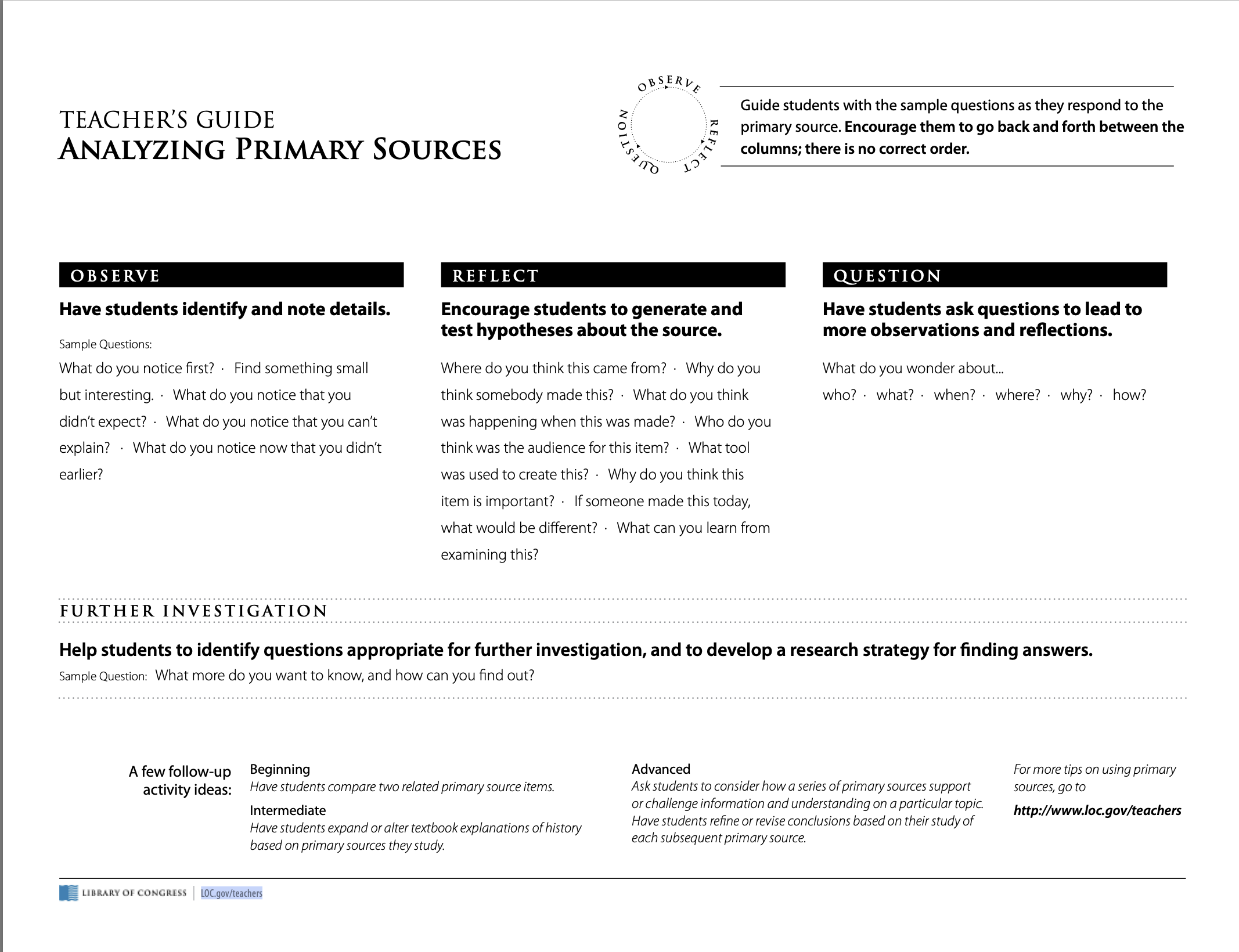 Teacher’s Guide: Analyzing Primary Sources
Teacher’s Guide: Analyzing Primary Sources A one-page guide for teachers on how to support students learning from and about primary sources.
-
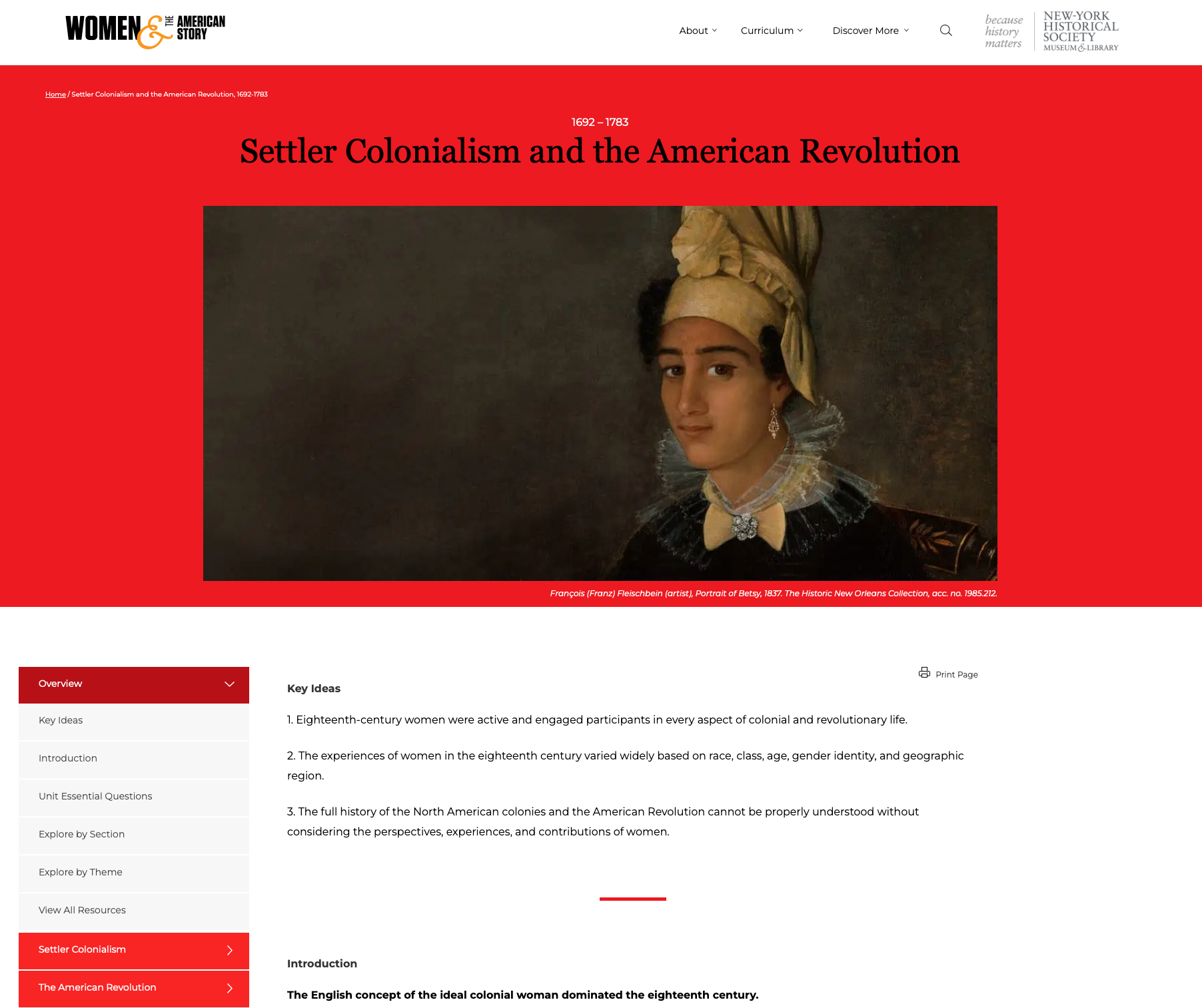 Settler Colonialism and the American Revolution: Women and the American Story History Unit (1692-1783)
Settler Colonialism and the American Revolution: Women and the American Story History Unit (1692-1783) Content wise, this unit goes best with 3rd grade history and 5th grade USHG Eras 2 and 3. There are opportunities for geography, economics, and civics integration. Which standards are best will depend on the resources you include, how you include them, and the grade you teach. That said, we do recommend these resources for all grades to help develop historical thinking and inquiry skills described in the K - 12 standards.
-
 Let’s Talk about Race: It isn’t Real, but Racism is Lesson Plan and Materials
Let’s Talk about Race: It isn’t Real, but Racism is Lesson Plan and Materials "Objective: Students will begin the process of “unlearning” the deeply ingrained societal myth that race is a biological reality by tracing the origins of the invention of ‘race.'
"THIS KEY CONCEPT IN AN ANTIRACIST CLASSROOM: “Racism is real, Race is not...so race does not account for racism.” - Dr. Barbara Fields
"If race isn’t real, where does racism come from? This lesson follows the research of Dr. Barbara Fields and Dr. Ibram X. Kendi to show to students that racism does not actually come from ignorance or hate, but from racist policies which were created for the financial benefit of people in power. Later, racism was invented to justify those racist policies. Unfortunately, the made-up idea of race is going to have a gigantic impact on the story of American history. "
-
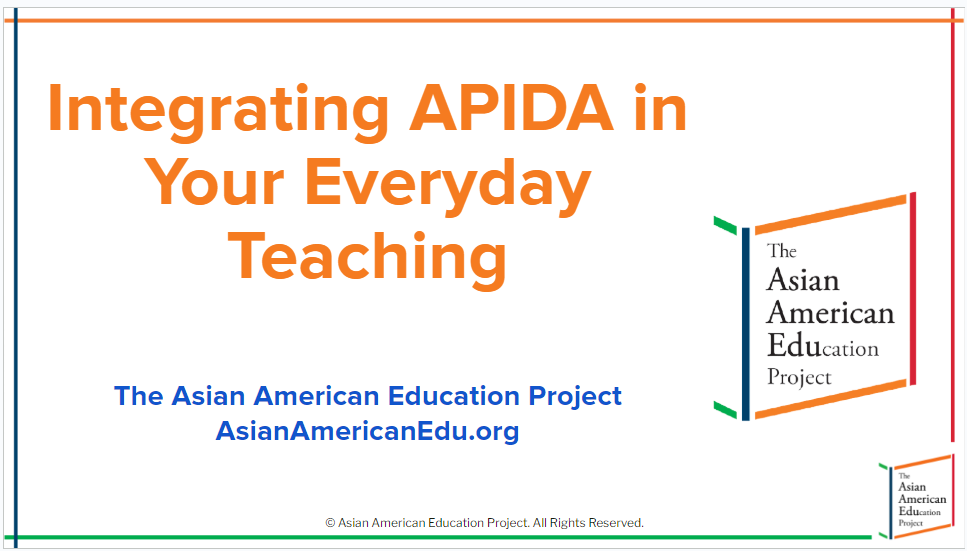 Integrating Asian Pacific Islander Desi Americans (APIDA) in Your Everyday Teaching
Integrating Asian Pacific Islander Desi Americans (APIDA) in Your Everyday Teaching These slides are from a webinar by the Asian American Education Project aimed to help teachers integrate APIDA histories into their existing teaching. The slides share examples of APIDA inclusion into existing curriculum, pedagogical strategies to do so, and reflective questions to help K-12 history teachers probe their own teaching.
Example teaching strategies/historical moments are:
- Angel Island and Ellis Island
- Japanese Incarceration during WWII, Treatment of Muslim Americans and South Asian Americans post 9/11, and U.S. Detention Facilities at the Border
- Tape vs. Hurley and Brown vs. Board
- Immigration Patterns of Southeast Asian refugees as a result of the Vietnam War
- Lue Gim Gong saves Florida's Citrus Plants
- Colonization of Hawai'i
-
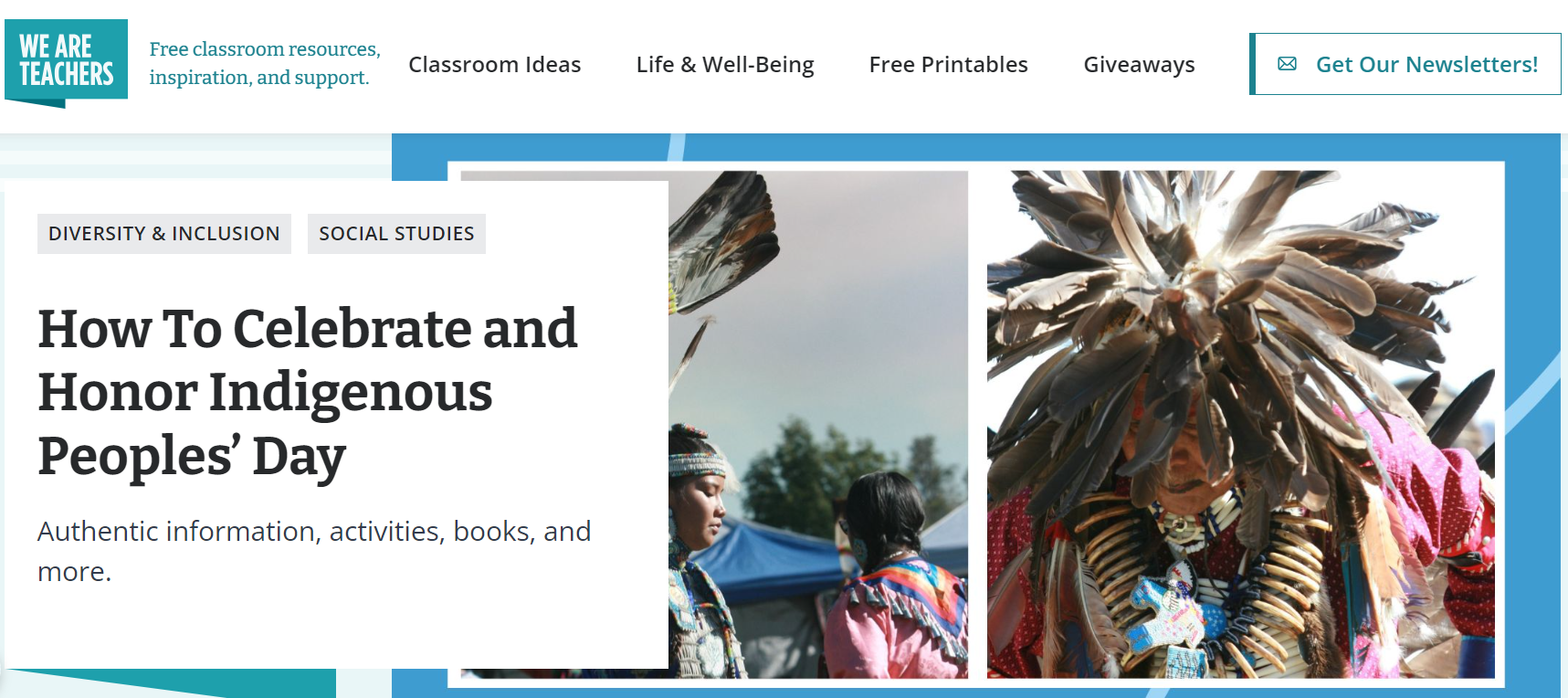 How To Celebrate and Honor Indigenous Peoples’ Day
How To Celebrate and Honor Indigenous Peoples’ Day Paul Flores IV (Apache) details ways to include Indigenous knowledges, histories, and cultures into your teaching, especially if you do not identify as Indigenous.
Flores says in paragraph 3, and we want to highlight: "It’s important to approach topics related to Indigenous peoples with thoughtfulness and care, as many of these subjects can be quite sensitive. Previewing any content before showing your class is recommended to make sure it’s presented in a respectful, culturally appropriate manner. By making the effort to learn directly from Native voices, you can gain invaluable insights into the vibrant, living cultures that have inhabited this land for millennia and participate in the important work of honoring and preserving these irreplaceable traditions."
-
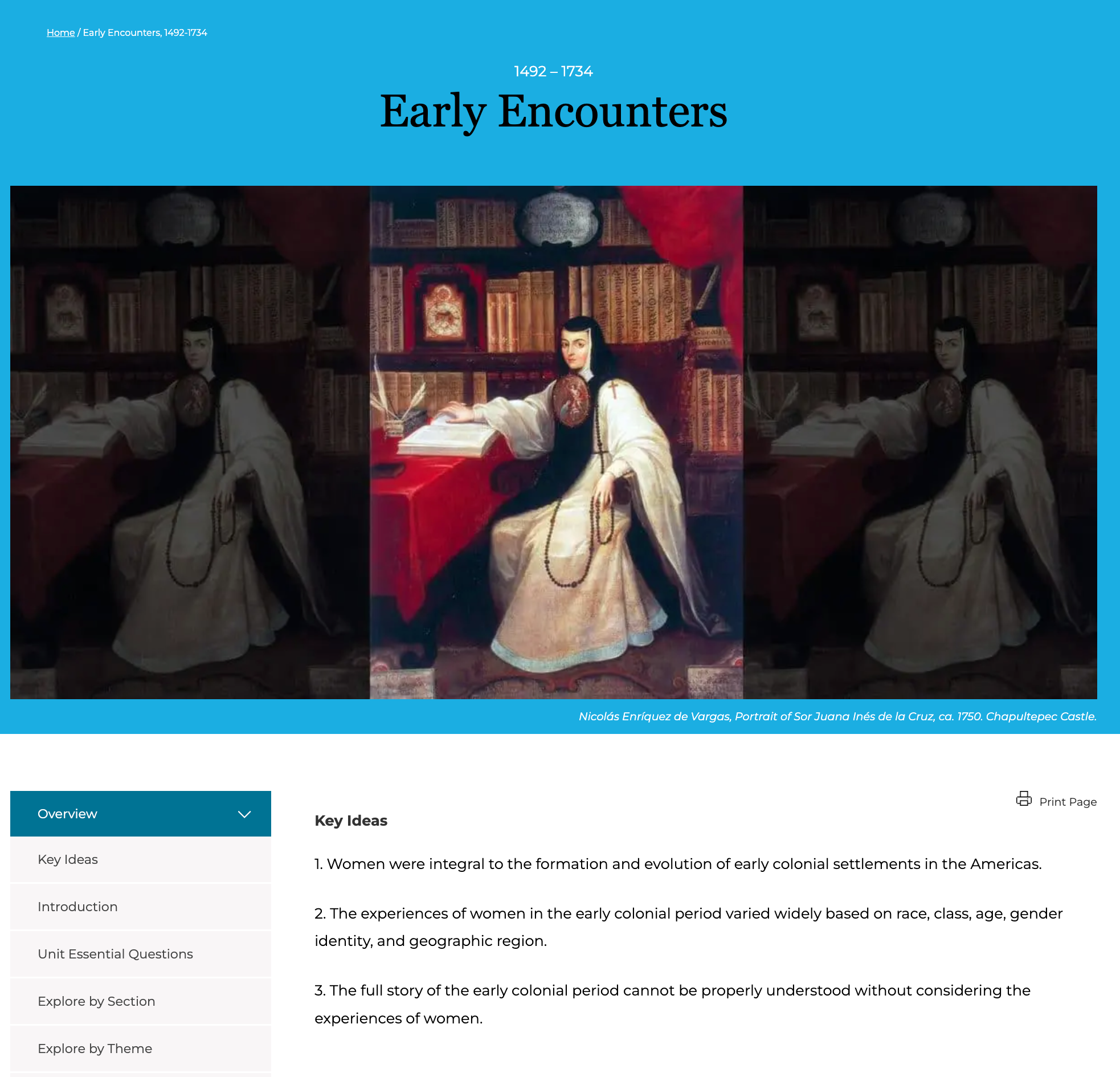 Early Encounters: Women and the American Story History Unit (1492-1734)
Early Encounters: Women and the American Story History Unit (1492-1734) Content wise, this unit goes best with 3rd Grade history and 5th grade USHG Eras 1 and 2. Which standards are best will depend on the resources you include, how you include them, and the grade you teach. That said, we do recommend these resources for all grades to help develop historical thinking and inquiry skills described in the K - 12 standards.
 Teacher’s Guide: Analyzing Primary Sources A one-page guide for teachers on how to support students learning from and about primary sources.
Teacher’s Guide: Analyzing Primary Sources A one-page guide for teachers on how to support students learning from and about primary sources. Settler Colonialism and the American Revolution: Women and the American Story History Unit (1692-1783) Content wise, this unit goes best with 3rd grade history and 5th grade USHG Eras 2 and 3. There are opportunities for geography, economics, and civics integration. Which standards are best will depend on the resources you include, how you include them, and the grade you teach. That said, we do recommend these resources for all grades to help develop historical thinking and inquiry skills described in the K - 12 standards.
Settler Colonialism and the American Revolution: Women and the American Story History Unit (1692-1783) Content wise, this unit goes best with 3rd grade history and 5th grade USHG Eras 2 and 3. There are opportunities for geography, economics, and civics integration. Which standards are best will depend on the resources you include, how you include them, and the grade you teach. That said, we do recommend these resources for all grades to help develop historical thinking and inquiry skills described in the K - 12 standards. Let’s Talk about Race: It isn’t Real, but Racism is Lesson Plan and Materials "Objective: Students will begin the process of “unlearning” the deeply ingrained societal myth that race is a biological reality by tracing the origins of the invention of ‘race.' "THIS KEY CONCEPT IN AN ANTIRACIST CLASSROOM: “Racism is real, Race is not...so race does not account for racism.” - Dr. Barbara Fields "If race isn’t real, where does racism come from? This lesson follows the research of Dr. Barbara Fields and Dr. Ibram X. Kendi to show to students that racism does not actually come from ignorance or hate, but from racist policies which were created for the financial benefit of people in power. Later, racism was invented to justify those racist policies. Unfortunately, the made-up idea of race is going to have a gigantic impact on the story of American history. "
Let’s Talk about Race: It isn’t Real, but Racism is Lesson Plan and Materials "Objective: Students will begin the process of “unlearning” the deeply ingrained societal myth that race is a biological reality by tracing the origins of the invention of ‘race.' "THIS KEY CONCEPT IN AN ANTIRACIST CLASSROOM: “Racism is real, Race is not...so race does not account for racism.” - Dr. Barbara Fields "If race isn’t real, where does racism come from? This lesson follows the research of Dr. Barbara Fields and Dr. Ibram X. Kendi to show to students that racism does not actually come from ignorance or hate, but from racist policies which were created for the financial benefit of people in power. Later, racism was invented to justify those racist policies. Unfortunately, the made-up idea of race is going to have a gigantic impact on the story of American history. " Integrating Asian Pacific Islander Desi Americans (APIDA) in Your Everyday Teaching These slides are from a webinar by the Asian American Education Project aimed to help teachers integrate APIDA histories into their existing teaching. The slides share examples of APIDA inclusion into existing curriculum, pedagogical strategies to do so, and reflective questions to help K-12 history teachers probe their own teaching. Example teaching strategies/historical moments are: - Angel Island and Ellis Island - Japanese Incarceration during WWII, Treatment of Muslim Americans and South Asian Americans post 9/11, and U.S. Detention Facilities at the Border - Tape vs. Hurley and Brown vs. Board - Immigration Patterns of Southeast Asian refugees as a result of the Vietnam War - Lue Gim Gong saves Florida's Citrus Plants - Colonization of Hawai'i
Integrating Asian Pacific Islander Desi Americans (APIDA) in Your Everyday Teaching These slides are from a webinar by the Asian American Education Project aimed to help teachers integrate APIDA histories into their existing teaching. The slides share examples of APIDA inclusion into existing curriculum, pedagogical strategies to do so, and reflective questions to help K-12 history teachers probe their own teaching. Example teaching strategies/historical moments are: - Angel Island and Ellis Island - Japanese Incarceration during WWII, Treatment of Muslim Americans and South Asian Americans post 9/11, and U.S. Detention Facilities at the Border - Tape vs. Hurley and Brown vs. Board - Immigration Patterns of Southeast Asian refugees as a result of the Vietnam War - Lue Gim Gong saves Florida's Citrus Plants - Colonization of Hawai'i How To Celebrate and Honor Indigenous Peoples’ Day Paul Flores IV (Apache) details ways to include Indigenous knowledges, histories, and cultures into your teaching, especially if you do not identify as Indigenous. Flores says in paragraph 3, and we want to highlight: "It’s important to approach topics related to Indigenous peoples with thoughtfulness and care, as many of these subjects can be quite sensitive. Previewing any content before showing your class is recommended to make sure it’s presented in a respectful, culturally appropriate manner. By making the effort to learn directly from Native voices, you can gain invaluable insights into the vibrant, living cultures that have inhabited this land for millennia and participate in the important work of honoring and preserving these irreplaceable traditions."
How To Celebrate and Honor Indigenous Peoples’ Day Paul Flores IV (Apache) details ways to include Indigenous knowledges, histories, and cultures into your teaching, especially if you do not identify as Indigenous. Flores says in paragraph 3, and we want to highlight: "It’s important to approach topics related to Indigenous peoples with thoughtfulness and care, as many of these subjects can be quite sensitive. Previewing any content before showing your class is recommended to make sure it’s presented in a respectful, culturally appropriate manner. By making the effort to learn directly from Native voices, you can gain invaluable insights into the vibrant, living cultures that have inhabited this land for millennia and participate in the important work of honoring and preserving these irreplaceable traditions." Early Encounters: Women and the American Story History Unit (1492-1734) Content wise, this unit goes best with 3rd Grade history and 5th grade USHG Eras 1 and 2. Which standards are best will depend on the resources you include, how you include them, and the grade you teach. That said, we do recommend these resources for all grades to help develop historical thinking and inquiry skills described in the K - 12 standards.
Early Encounters: Women and the American Story History Unit (1492-1734) Content wise, this unit goes best with 3rd Grade history and 5th grade USHG Eras 1 and 2. Which standards are best will depend on the resources you include, how you include them, and the grade you teach. That said, we do recommend these resources for all grades to help develop historical thinking and inquiry skills described in the K - 12 standards.